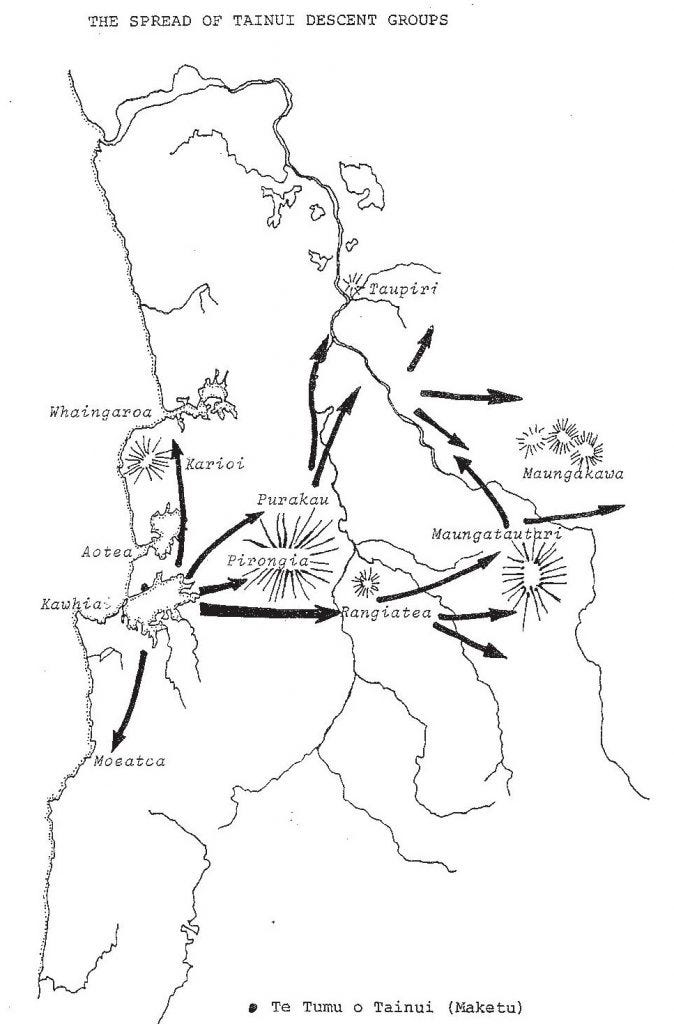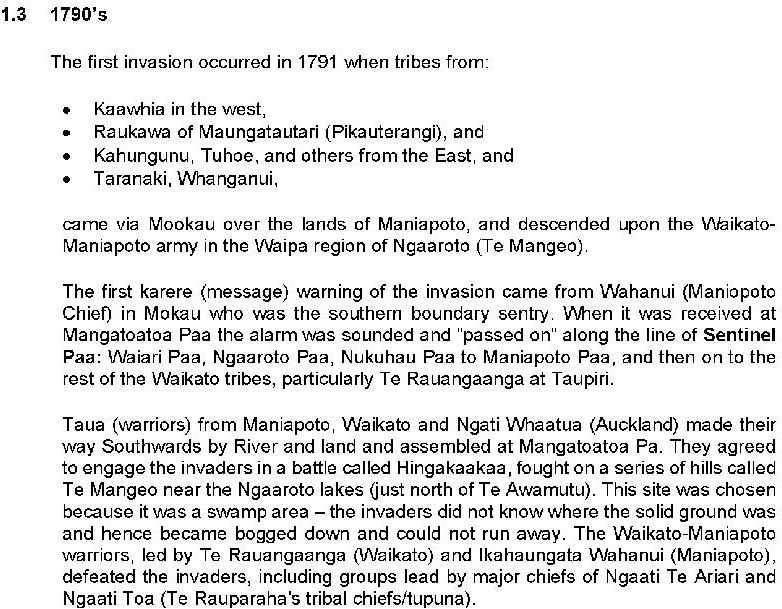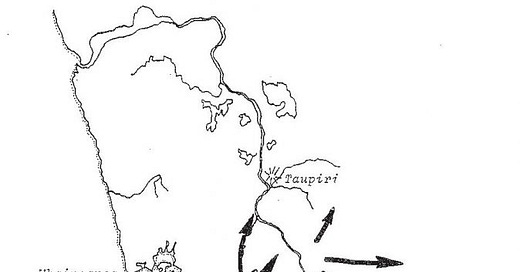Germany & Waikato 1648 to 1806: my notes
These notes are for the purpose of understanding the genesis of modern town planning rules. They include notes on Waikato only to understand the changes happening here during the same period.
‘Every house was a miniature factory’ Simon Winder, Danubia, p142
The year 1648 marked the end of the Thirty Years’ War in Germany. 1806 saw the end of the Holy Roman Empire and the establishment of the Confederation of the Rhine at the behest of Napoleon. 1806 was the year the ship Venus arrived in New Zealand and marked 'the first spark'* of the musket wars. (*The Musket Wars. by R.D.Crosby. p45)
Why look to Germany (Lake Constance to North Sea)? Because Patrick Geddes, in 1915, at a time you could not actually visit Germany, wrote in his badly timed book, Cities in Evolution: ‘The town planner must, however, above all, acquaint himself with the cities of modern Germany’ (p161). I am not a town planner, but I am interested in cities, so I will start with Lewis Mumford’s 1938 book, The culture of cities which explains the Middle Ages: ‘The unattached person during the Middle Ages was one either condemned to exile or doomed to death: if alive, he immediately sought to attach himself, at least to a band of robbers. To exist, one had to belong to an association: a household, a manor, a monastery, a guild; there was no security except in association, and no freedom that did not recognize the obligations of associations of a corporate life. One lived and died in the style of one’s class and corporation’ (p29). Simon Winder’s 2011 book, Germania, talks about the need for walls: ‘Generations might go by with no danger of any kind, but then war would break out and those towns which had failed to maintain and elaborate their walls or failed to keep cutting-edge equipment in the arsenal were doomed to disaster’ (p76). 1648 was the year the horrors of the Thirty Years’ War ended in Europe: it was again business as usual, both for townspeople who belonged and those who did not belong. ‘Its response was what it had always been: shut them out, drive them out, and don’t worry about where they go then’ (p336), German Home Towns, 1648-1871, by Mack Walker.

Population and density of German towns – Germany is full of thousands of small towns with histories going back over a thousand years. The round town of Nordlingen is an interesting example as it measures 750m across, and has an area of 44ha (0.44 km2 or 0.17 square miles). Its present population is ~13,500* giving it a population density of ~307 people per ha (~30,680 ppkm2 or ~79,410 per square mile). Using the German-language Wikipedia site, the walled town of Rothenburg ob der Tauber in 1818 had a population of 5,302** people living in 803 houses {compared with 10,336 people in 2,432 houses in 1987}. Using Google maps, I measured the area inside the wall as 47 ha (0.47km2 or 0.18 square miles), giving it a population density of 112 people per ha (11,280 ppkm2 or 29,455 per square mile) and 17 houses per ha (1,708 hpkm2) In 1987 it had 220 people per ha (21,991 ppkm2 or 57,422 per square mile) and 51 houses per ha (5,174 hpkm2). Lewis Mumford wrote ‘no medieval town usually extended more than half a mile [0.8km] from its centre’ (p58). A radius of 0.8 km gives an area of 200 ha (2 km2 or 0.77 square miles). For population, Mack Walker wrote that ‘the upper limit appears to lie at about ten thousand population, perhaps fifteen’ (p27) or a median population of about ‘twelve thousand’ (p28). This nicely matches the population of Kassel shortly after 1685, where some ‘12,000 inhabitants lived’ when ‘some 1,400’ Huguenot refugees made Kassel city their new home (The Demigod’s City: A short history of Kassel, by Ralph P. Guntzel, p54). The influence or control of the town extended further than the city walls: it was normal for the town guilds to enforce a ‘ban mile that preserved local markets for local people’ (Walker p291) and the territorial princes managed local hunting grounds. The population density of a typical medieval town with a 1 mile radius of influence (800 ha or 8km2 or 3 square miles) and a population of 12,000 equates to 15 people per hectare (1,500 people per km2 or 4,000 people per square mile).

Politics/Democracy/Consultation: German towns have a long history of citizen representation. As an example in Kassel ‘In 1317 the Landgrave [count] of the time agreed that henceforth he and his successors would not pass any laws affecting the city without prior consultation of the citizens representative’ (p33 Guntzel). The interests of The Habsburg ruler in Vienna, state administrators, local princes and townspeople were at different levels and for most of the time none of them had the power to overrule one side and enforce a decision on the other. When it came to dealing with the townspeople ‘The most important political body was the Inner Council, usually with from six to a dozen members ... [who] were the main formulators and executors of community policies and affairs, they held most judicial authority’ (p44 Walker). The Inner Council answered to ‘The Outer Council (or Citizen Council) ... [which] was the main recruiting ground for new Inner Councillors ... the Outer Council was much larger than the Inner, with twenty-five to fifty members, or even a hundred or more ... it traditionally had a right to oversee town finances’ (p47 Walker), and these councillors were influenced by the demands of the guilds that controlled the movement of trade between towns at a local level. As long as the guilds acted within the law they were protected by Habsburg rulers.

Guilds: Mumford’s explanation: ‘[A] Guild was a general body, organizing and controlling the economic life of the town as a whole: regulating conditions of sale, protecting the consumer from extortion and the honest craftsman from unfair competition, protecting the traders of the town from the disorganization of their market by outside influences’ (p30). Walker’s explanation: ‘guilds supervised the recruitment, training, and allocation of individual citizens into the community’s economy, and their economic character placed its stamp upon hometown morality and the nature of citizenship itself’ (p77). To start with, ‘apprentices were required to be Christians of honourable estate and parentage. After a trial period of a few weeks ... the apprentice was bound to serve the master ... [for] some three or four years’ (p82 Walker). This was followed by ‘Two or more years of attested wandering [which] was a customary condition for application for master-ship’ (p84 Walker). With this travelling the guild networked throughout Germany, sharing trade innovations, and learning to identify peddlers and merchant raiders trying to circumvent the guild system, which could undermine the ‘Economic security and stability of the solid citizen’ (p101 Walker)

Emigration/Mercenaries – Town life was predictable and secure if you belonged and were of good moral character. Should you need support, you had access to hospitals (almshouses) and charitable housing paid for by the local poor tax. If you disrupted the status quo or if your religious beliefs were different to the local majority, life could be uncomfortable. Germans had choices and thousands immigrated to frontier towns, both west to America and to the east of Europe, bringing their town rules. For those wanting to escape the countryside, the local landgrave (nobility) formed mercenary armies, which they hired out to fight others’ wars, namely the British in America.

Hunting grounds/Parks - Versailles impressed the nobility of German so much that many German cities rulers built impressive parks. Some examples: Wilhelmshoher Park and Karlsaue in Kassel (p21 Kassel City Guide, by Michael Imhof), Karlsrule Palace, Mannheim Palace (which has one more window than Versailles) ... even today most cities in German will have a good-sized public park within walking distance of their historic centre.
Town Plan – Once inside the town wall, the street network is permeable, blocks are small, land use is mixed, and dead end streets are rare. ‘The central position of the church is the key to the layout of the medieval city ... The main market place grows up by the church because it is there that the citizens most frequently assemble ... The scale of the market place is not directly determined by either the height of the main buildings or size of the city ... the medieval planner tended to keep to human dimensions ... instead of building one large hospital [almshouse], it was commoner to provide a small one for every two or three thousand people’ (p54 ... 55 Mumford).
‘The hometown artisan [craftsman] ordinarily sold his own products, on the same premises where he produced them’ (p77 Walker)
End: here end my notes on Germany 1648 to 1806 and Waikato Aotearoa (New Zealand)




